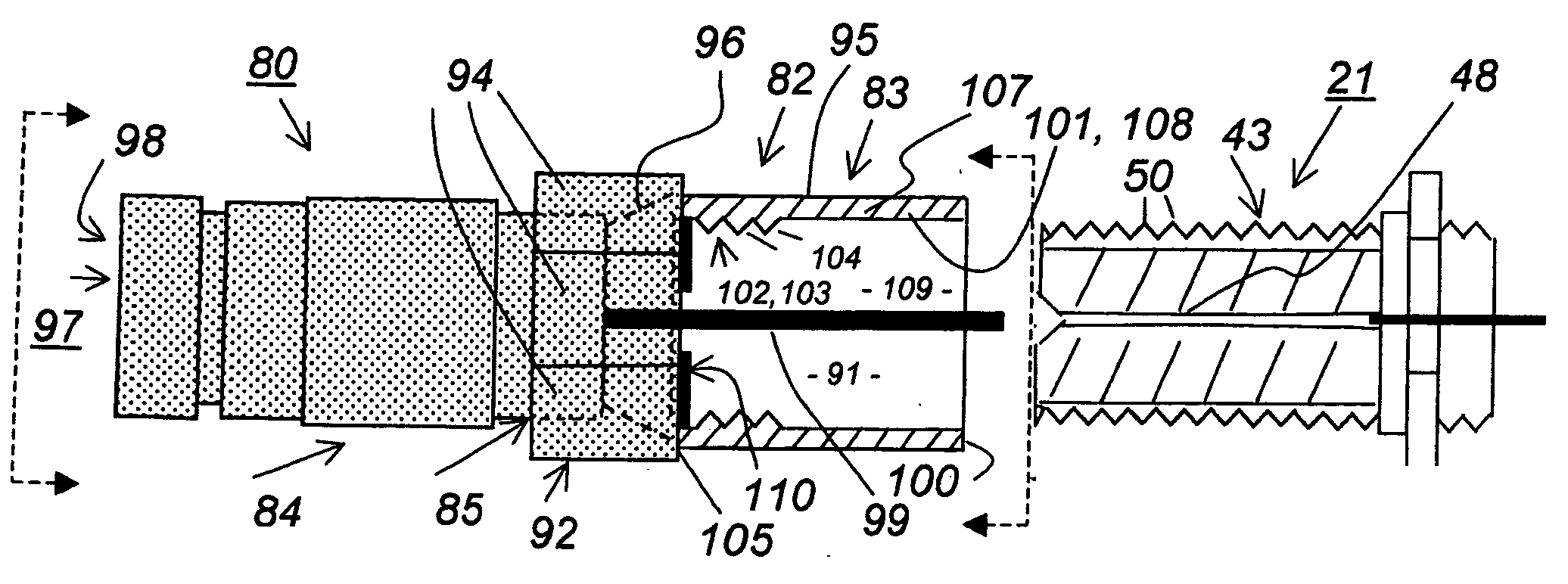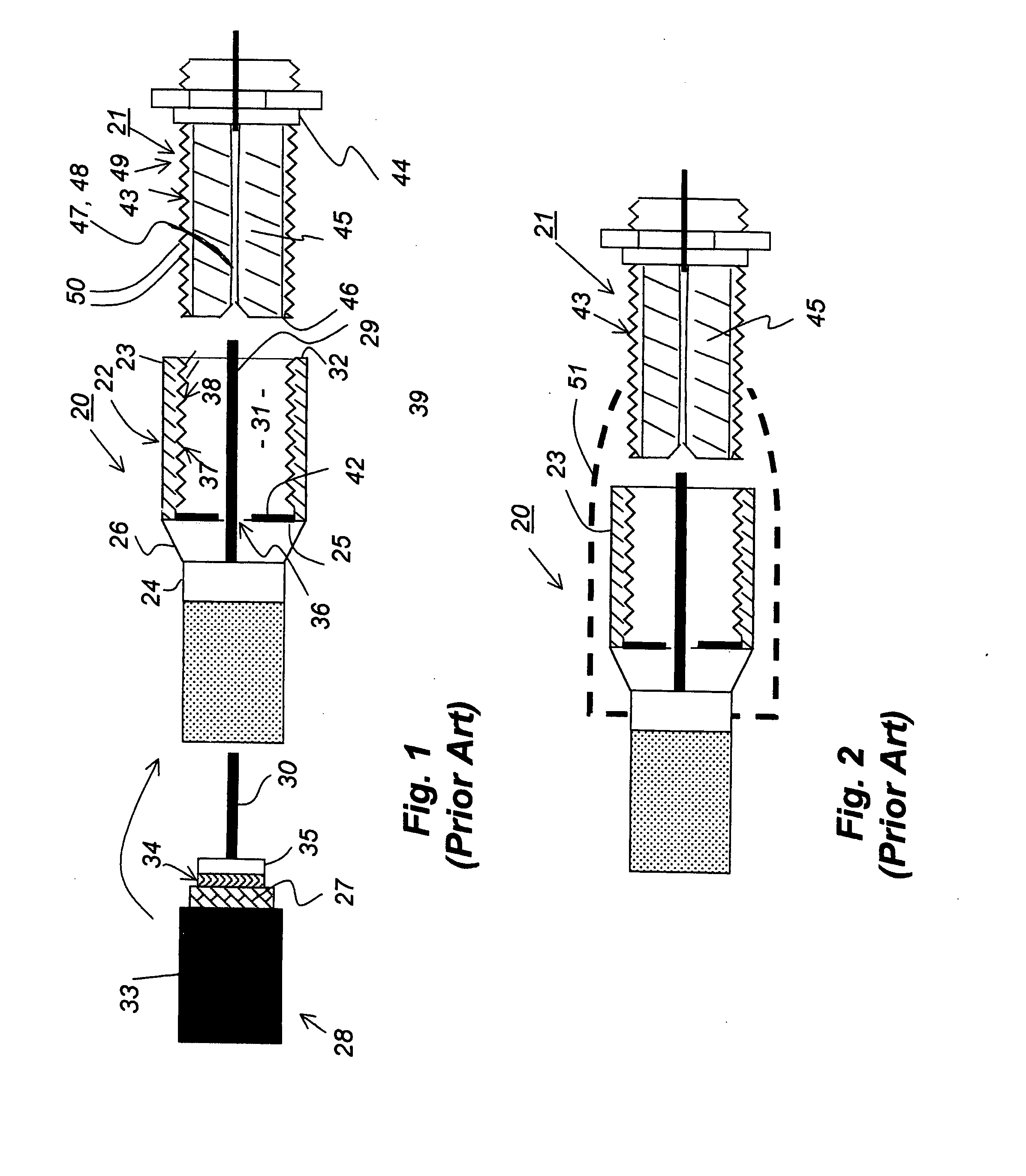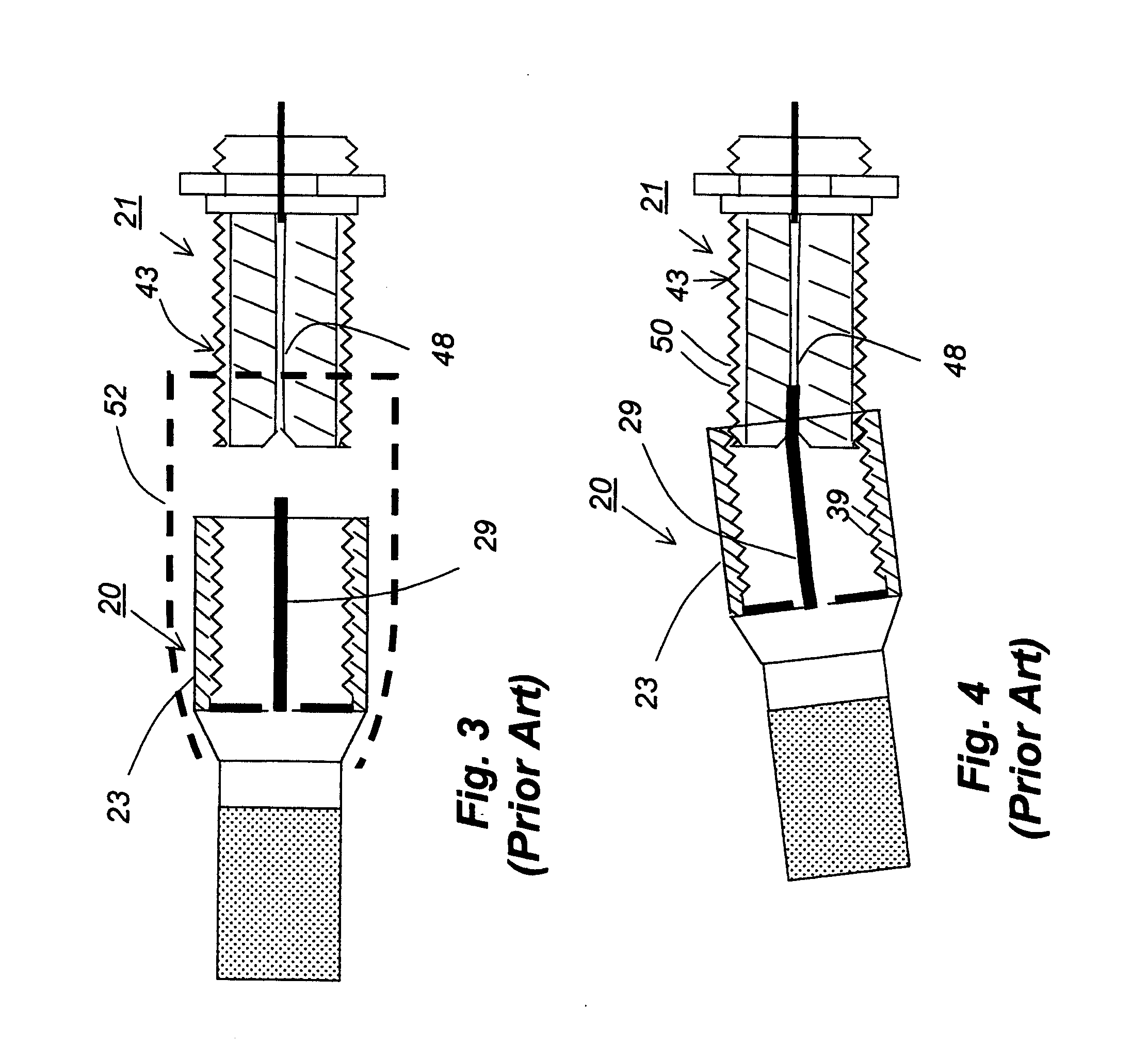Reduced threads coaxial connector
- Summary
- Abstract
- Description
- Claims
- Application Information
AI Technical Summary
Benefits of technology
Problems solved by technology
Method used
Image
Examples
Embodiment Construction
[0045]An appreciation of certain advantages of the present invention over the prior art may be best facilitated by first reviewing certain characteristics of prior art coaxial connectors.
[0046]FIGS. 1-5 illustrate a prior art fully-threaded male coaxial connector 20 and a prior art female coaxial connector 21 which is adapted to mate with connector 20. As shown in FIG. 1, male connector 20 includes a cylindrically-shaped tubular body 22 that has a front elongated tubular section 23 made of an electrically conductive material such as nickle plated zinc. Body 22 includes a short rear tubular section 24 of smaller diameter than front tubular section 23 which is joined at a rear annular flange 25 of the front tubular section by an annular transition section 26. Rear tubular section 24 is in electrically conductive contact with transition section 26 and front tubular section. Typically, the foregoing sections of connector 20 are made from a single piece of metal tube stock.
[0047]Rear tub...
PUM
 Login to View More
Login to View More Abstract
Description
Claims
Application Information
 Login to View More
Login to View More - R&D
- Intellectual Property
- Life Sciences
- Materials
- Tech Scout
- Unparalleled Data Quality
- Higher Quality Content
- 60% Fewer Hallucinations
Browse by: Latest US Patents, China's latest patents, Technical Efficacy Thesaurus, Application Domain, Technology Topic, Popular Technical Reports.
© 2025 PatSnap. All rights reserved.Legal|Privacy policy|Modern Slavery Act Transparency Statement|Sitemap|About US| Contact US: help@patsnap.com



